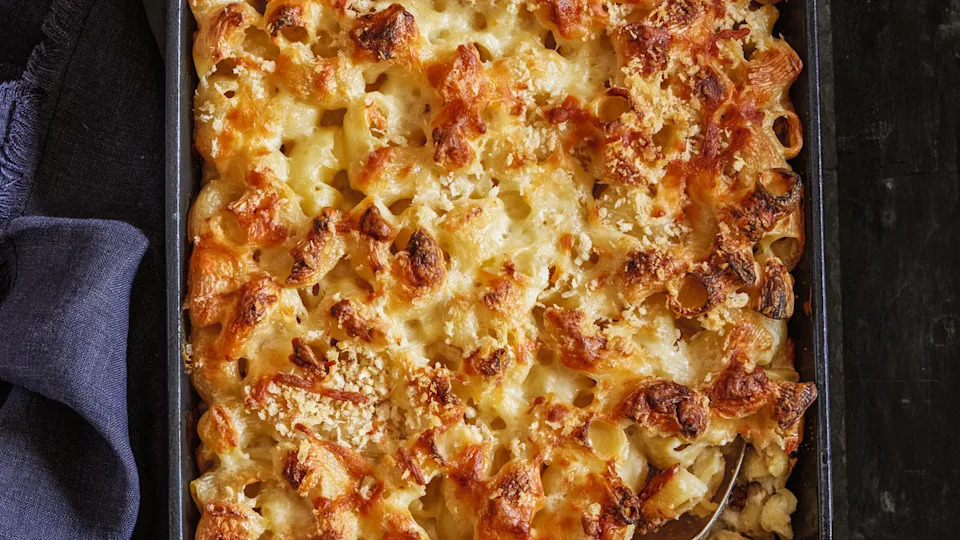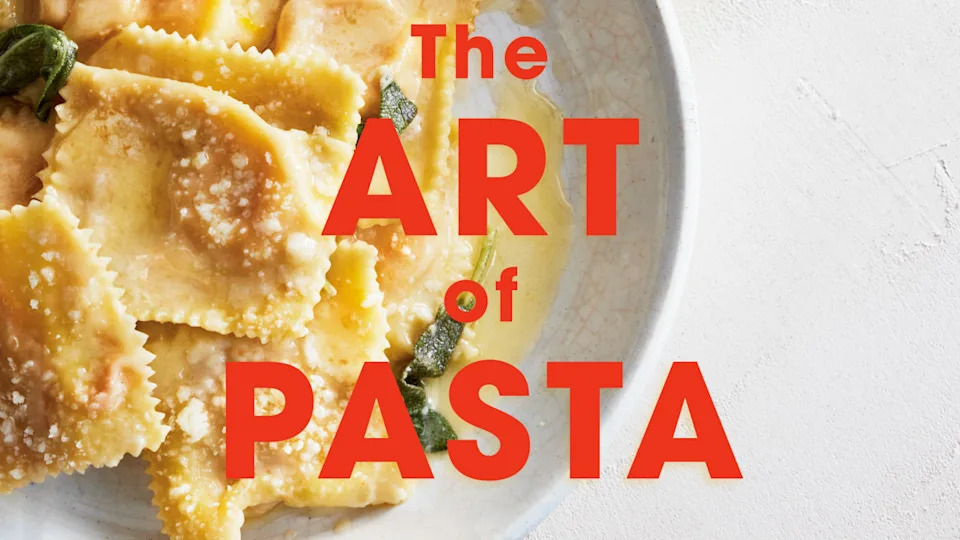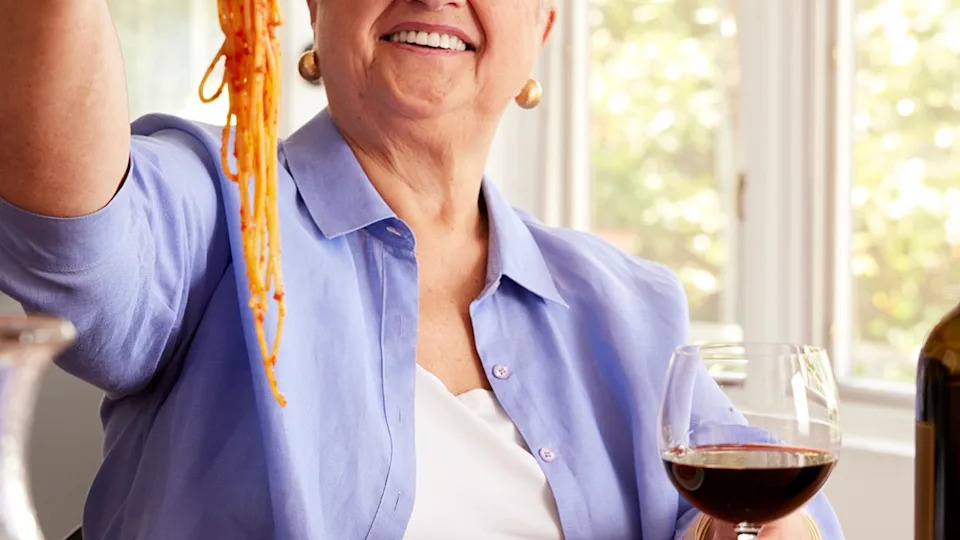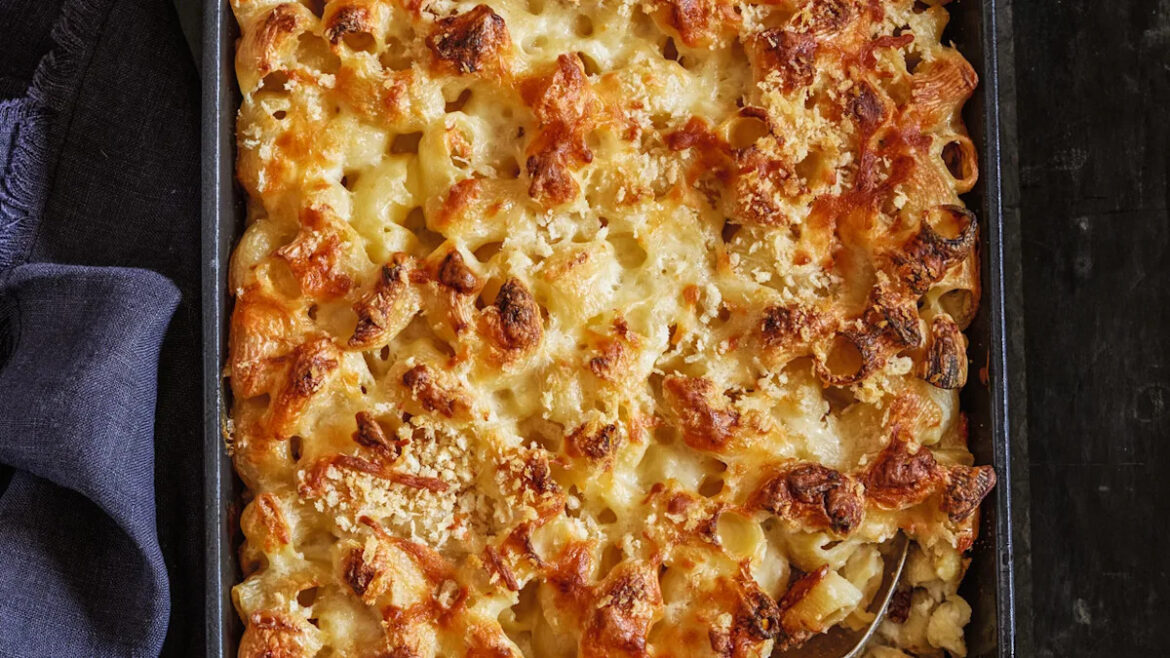After 50 years running restaurants, 26 years cooking on Public Television and writing 16 books, Lidia Bastianich is trying something new: dedicating a cookbook to one singular food. And that food? Pasta, of course.
The legendary chef has always focused on Italian food, but this is the first time she’s digging into the comfort food carb in a big way. In Lidia’s The Art of Pasta, which published this week, she covers it all: dried and fresh pasta, simple and special occasion recipes, noodles sauced and tossed with all sorts of delicious ingredients. The book’s more than 100 recipes take you through the regional history of Italian pasta, help you shop for pasta and pasta-adjacent ingredients (think cheese, tomatoes and olive oil) and provide lots of delicious inspiration.
But why pasta and why now? “If you’re cooking, writing about or teaching Italian food, there has to be pasta,” Bastianich tells Parade. “Most everybody loves pasta, it’s not a complicated thing to make and it’s a comfort food.”
She also feels like now is the perfect moment for pasta. Whether it’s a quick weeknight noodle dish or something more complicated, like lasagna, Bastianch says there’s power in pasta. “It’s about nurturing the people that you love and getting the family involved,” she shares. “It’s about getting together and sitting at the table, which is something we need now more than ever.”
As has always been the case, this book is also about teaching. “I think of myself as a coach,” explains Bastianich. “At first, some cooks are afraid and nervous and they need the ideas, the comfort and the guidance of recipes, but before they know it they only need Lidia’s recipes as a guideline.”
Her thorough, clearly written, delicious recipes help home cook build their confidence in the kitchen, eventually making recipes their own, which is when the real fun of cooking begins. Speaking of fun, the book includes some Italian-inspired riffs on American classics, including one recipe that caught our eye: Italian Mac and Cheese.
It seemed like the perfect dish to make as we cruise through fall and head into the holiday season, so we quizzed her about the recipe and also got a few more smart tips and tricks for making our at-home pasta a lot better.
Related: The Italian Way to Make Turkey 10x Better, According to Legendary Chef Lidia Bastianich
😋😋 SIGN UP to get delicious recipes, handy kitchen hacks & more in our daily Parade Eats newsletter. 🍳🍔

Dana Gallagher
How To Make Italian Mac and Cheese, According to Lidia Bastianich
This rich and creamy baked pasta filled with three different Italian cheese will make you rethink what mac and cheese can be. Here’s how Bastianich puts a fresh spin on this comfort food classic.
Hold the elbows
Instead of standard elbow macaroni, Bastianich uses pipette, a chunky, pipe-shaped pasta. “I like the bigger nooks and crannies because they can hold more cheese sauce,” she says.
Baby the cheese sauce
Bastianich makes a cheese sauce that starts with a roux, which is just a mixture of butter and flour. Cook, stirring constantly, until the mixture is light brown and smells nutty, then add in some warm milk. Once the milk mixture is heated and thickened, take the sauce off the heat and gradually stir in your cheeses. If you add little cheese at a time off the heat you’ll get a smooth, creamy sauce. If you leave it on the heat the sauce is apt to scorch and/or separate.
Lean into Italian cheeses
It wouldn’t be Italian mac and cheese without Italian cheeses. For this recipe, Bastianich uses a mix of Fontina, Grana Padano and provola. Why this trio? The Fontina is rich, buttery and complex; the provola (which comes in a wax coating) is a great creamy baking cheese; and the nutty, super savory Grana Padano ties it all together.
You should be able to find most of these cheese in the cheese section of a well-stocked supermarket, though you could always venture out to your local Italian market or cheese shop. Bastianich suggests using any leftover cheese to make a next-level grilled cheese.
Make the pasta water work for you
In the cookbook, the mac and cheese is simple pasta, sauce and breadcrumbs, but Bastianich says the recipe is also a great place to mix in some additional veggies. “When you cook the pasta, just throw them in there,” she says. You already have the salted water going, so toss in whatever you’d like to add—frozen peas, some small broccoli florets, etc.
Related: I Tried 24 Rao’s Sauces and the Winner Tastes 100% Homemade
Finish with a crunch
Bastianch tops the dish with a panko breadcrumb topping, which adds some crunch to the soft, creamy mac and cheese. She adds some of the cheeses to the panko to add flavor and improve the texture. “Otherwise, the breadcrumbs would be too dry,” she explains.
Make cleanup easier
When the mac and cheese is ready to go into the oven, stick the pan on a baking sheet. Why? To catch any delicious cheese sauce that might bubble over the edges. “So you don’t have to clean the whole oven,” says Bastianich.
Round out the meal
If you want a side dish for your mac and cheese, Bastianich says that you can’t go wrong with a green salad, but also acknowledges that in fall and winter a cold salad might not feel like the right match.
For a cozy weather alternative, she likes to serve boiled or steamed veggies alongside the mac and cheese and often tosses a few different veggies together to make a cooked salad. She’s a fan of potatoes and beans tossed with some oil and vinegar, but you could use any veggie combination you like, including frozen vegetables.
Related: The Simple Yet Elevated Pasta Dish That Everyone in the House Loves, According to This Chef-Dad

Dana Gallagher
3 Easy Ways To Make Your At-Home Pasta So Much Better
As you might imagine, Bastianich has many tips for making better pasta at home. When we asked her the most common mistakes home cook make when they’re making pasta, she mentioned three common pitfalls.
Don’t overcook it
Most home cooks know this by now, but the key to well cooked dry pasta is cooking it just to al dente, which means the pasta still has a bit of bite. When in doubt, cook it a little less than you think you should so you can finish cooking the pasta in the sauce (more on that below) so it will absorb the sauce, making your pasta more flavorful.
Don’t oversauce it
“I see a lot of people putting the pasta in the bowl and then just spooning the sauce on top,” says Bastianich. “That means that half of the pasta is sauced and half of it gets nothing.” For properly sauced pasta, you need to marry the sauce and the pasta in a skillet over medium heat, adding a little starchy pasta water as needed.
As a general rule of thumb, she suggests using 2 to 3 cups of sauce per pound of dry pasta and a little less for fresh pasta, about 2 cups per pound. Bastianich suggests adding about two thirds of your sauce to the pasta in the skillet and using the remaining third to add at the end.
And how do you know when the pasta is properly sauced? “When the whole pasta is shiny and smiling and it’s coated with sauce and there’s not a big puddle of sauce at the bottom,” she says. “It has to be flowing and it has to kind of, you know, glide, with just enough sauce.”
Don’t overcomplicate it
In her years of teaching home cooks, Bastianich has also noticed that people often make things harder than they need to be. “You know, they always feel that they need to do more and more, but they need to do less,” she says. If you cook the pasta correctly and add the right amount of sauce you should have a simple, satisfying supper that comes together in 30 minutes or so.
Up Next:
Related: Bronze-Cut Pasta Is More Expensive Than Regular Dried Pasta, but Is It Worth It?
Source:
Dana Gallagher
This story was originally reported by Parade on Oct 16, 2025, where it first appeared in the Food & Drink section. Add Parade as a Preferred Source by clicking here.


Dining and Cooking